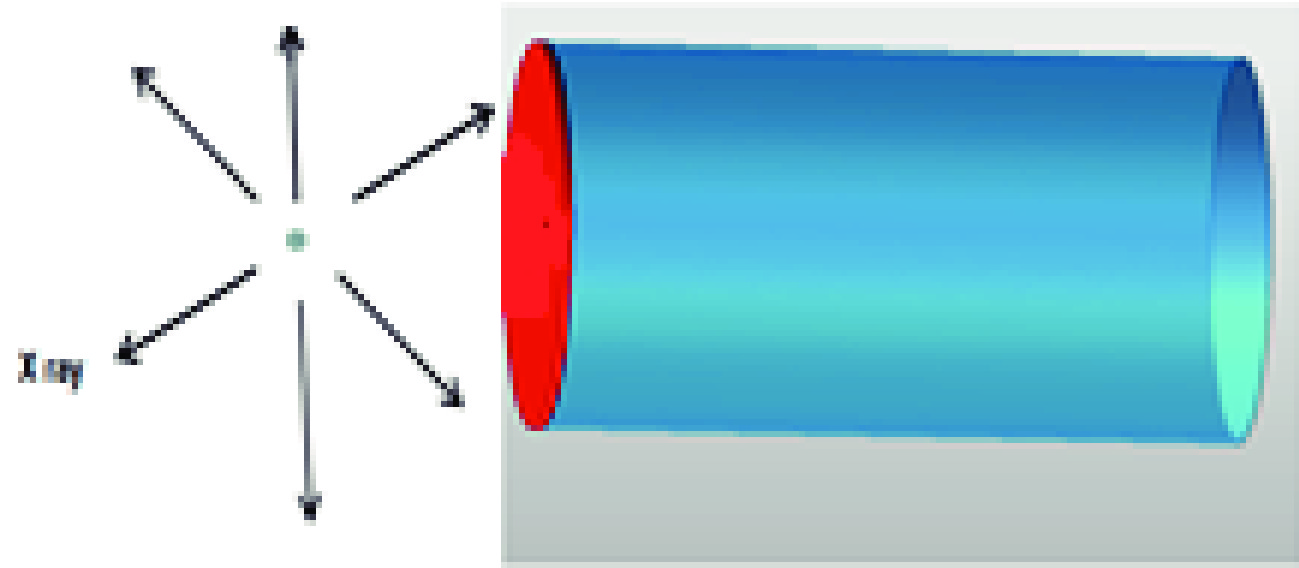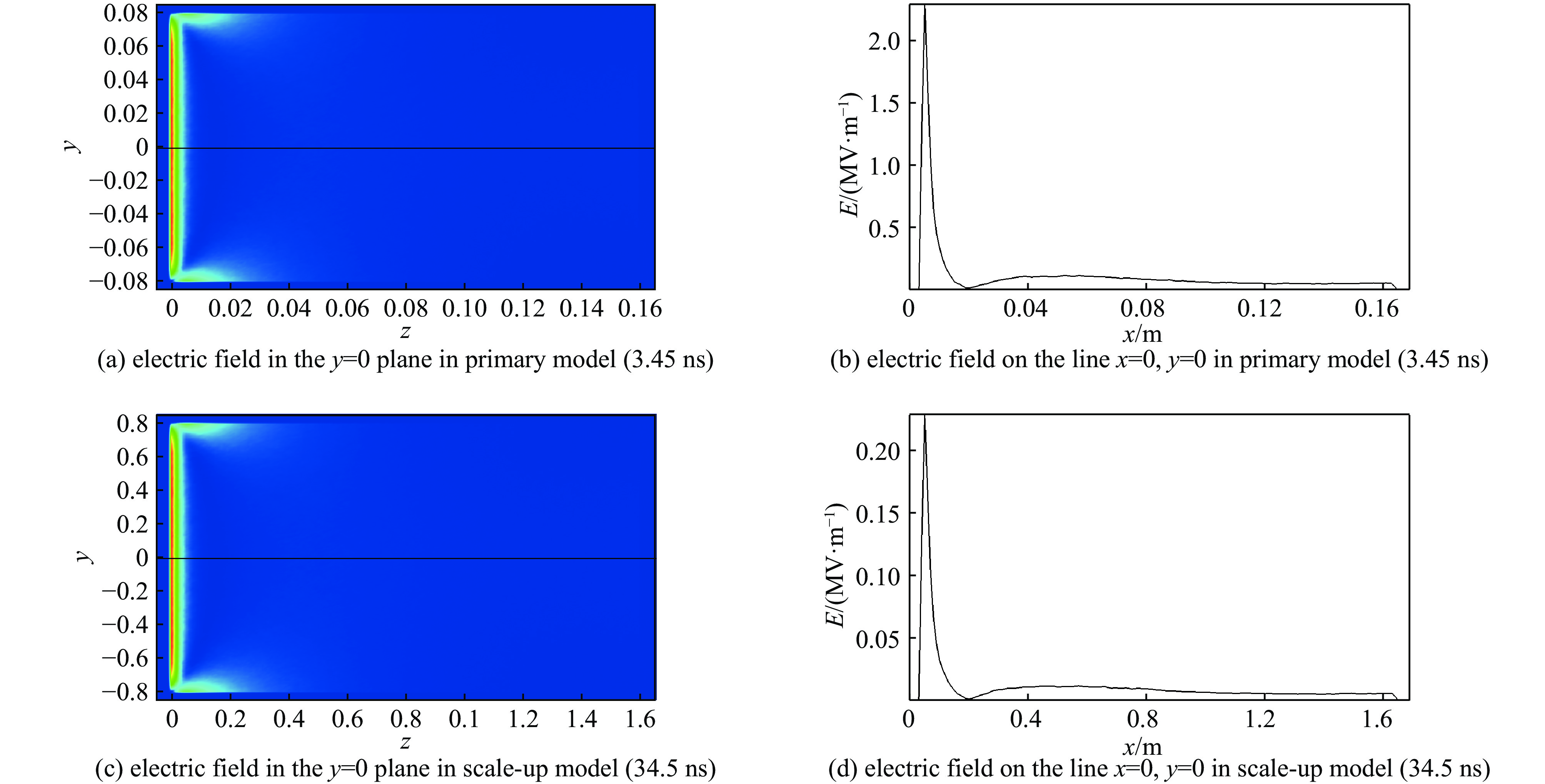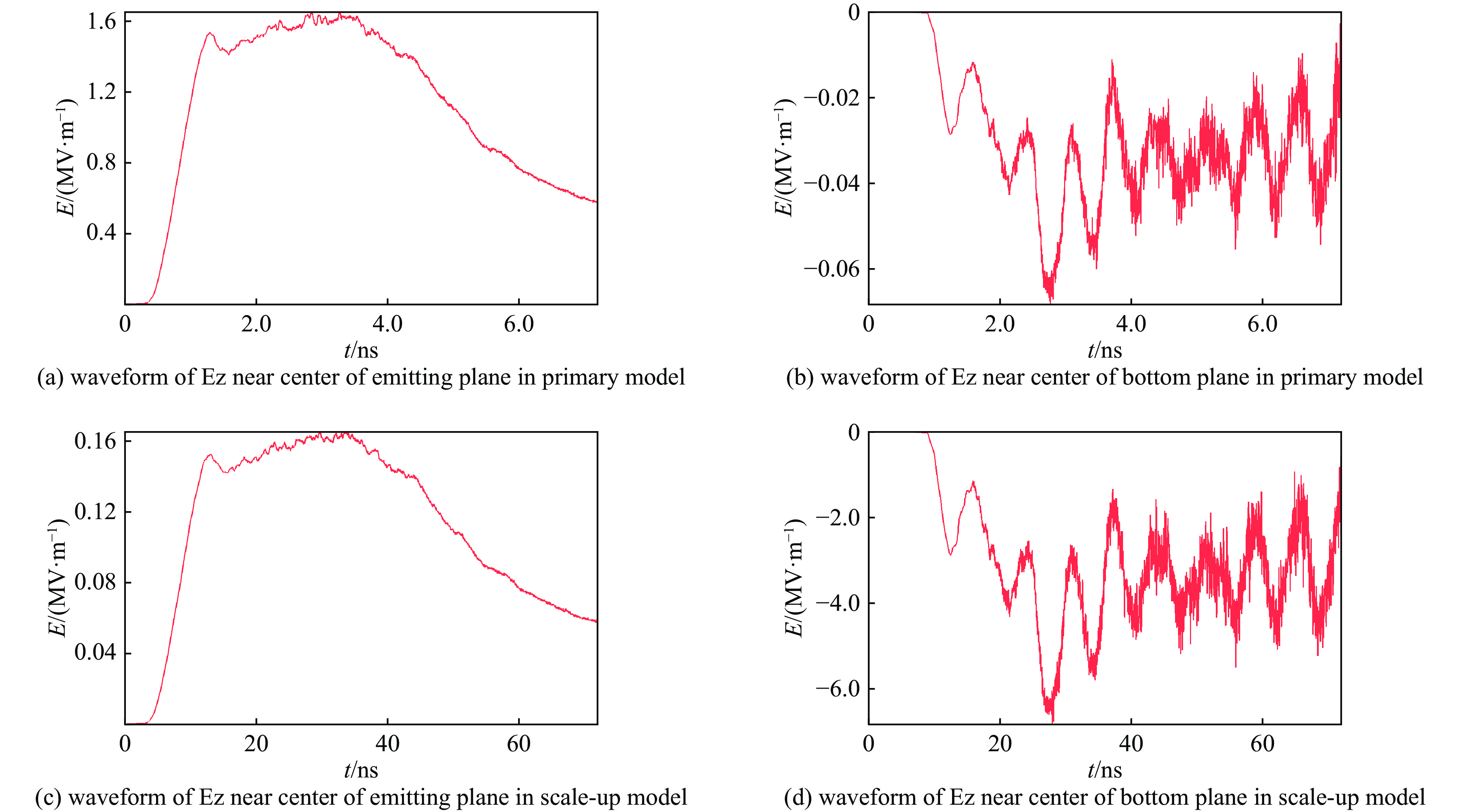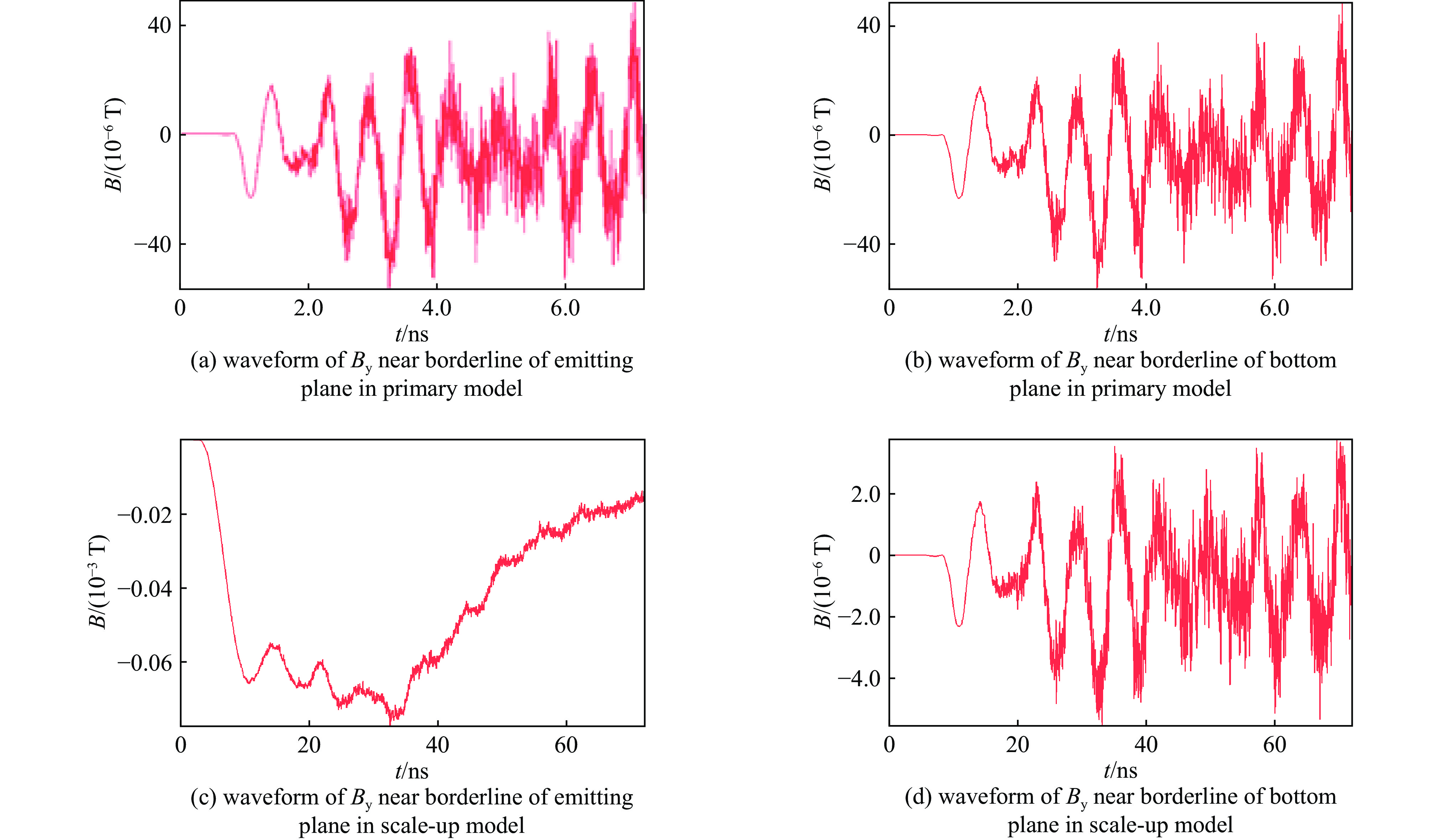Scaling laws of SGEMP and application in cavity SGEMP
-
摘要: 研究系统电磁脉冲(SGEMP)的定标理论,掌握SGEMP的定标法则,并将其应用于腔体SGEMP,提出保持腔壁材料厚度不变的规范变换方法,应用PIC方法进行数值模拟研究,通过对比实验室激光等离子体源条件下的原模型与10倍扩比模型的模拟结果,发现两者在电场、磁场及电荷密度的空间分布规律上呈现严格一致性,幅值大小完全遵循定标关系:发射端面表面电场峰值原模型为2.0 MV/m,扩比模型为200 kV/m;磁场峰值原模型为0.8×10−3 T扩比模型为0.8×10−4 T;电荷密度峰值原模型为6.0×10−3 m−3,扩比模型为6.0×10−5 m−3。模拟结果验证了定标法则应用于腔体SGEMP的有效性。该研究为腔体SGEMP的物理机制解析及实验室模拟实验设计提供了理论依据。Abstract:
Background System-Generated Electromagnetic Pulse (SGEMP) arises from electromagnetic fields produced by photoelectrons emitted from spacecraft surfaces under intense X-ray or γ -ray irradiation. Cavity SGEMP, a critical subset of SGEMP, involves complex interactions within enclosed structures. While scaling laws have been established for external SGEMP, their applicability to cavity SGEMP remains debated due to photon spectrum distortion caused by variations in cavity wall thickness et al.Purpose This study aims to validate the applicability of SGEMP scaling laws to cavity SGEMP by proposing a canonical transformation method that maintains constant wall thickness. The goal is to provide a theoretical basis for analyzing cavity SGEMP mechanisms and designing laboratory-scale experiments.Methods A cylindrical cavity model with an aluminum wall was irradiated by a laser-produced plasma X-ray source. Numerical simulations were performed using a 3D particle-in-cell (PIC) code under two conditions: an original model and a 10×scaled-up model. Key parameters, including grid size and time steps, were scaled according to the derived laws. The wall thickness was kept constant to avoid photon spectrum distortion. Simulations compared electric fields, magnetic fields, charge densities, and current distributions between the two models.Results The original and scaled-up models exhibited identical spatial distributions of electromagnetic fields and charge densities. Specific validation results include: Peak electric fields decreased from 2.0 MV/m (original) to 200 kV/m (scaled-up).Peak magnetic fields reduced from 0.8×10−3 T (original) to 0.8×10−4 T (scaled-up), Charge densities maxima dropping from 6.0×10−3 /m3 to 6.0×10−5 /m3. Waveform shapes for currents and fields remained unchanged across models. These results all adhere to the scaling laws.Conclusions The scaling laws for SGEMP are validated for cavity SGEMP when wall thickness remains unchanged. This work provides a universal theoretical tool for cavity SGEMP studies and reliable scaling criteria for laboratory experiments.-
Key words:
- system generated electromagnetic pulse /
- Scaling law /
- PIC code
-
-
[1] 王泰春, 贺云汉, 王玉芝. 电磁脉冲导论[M]. 北京: 国防工业出版社, 2011Wang Taichun, He Yunhan, Wang Yuzhi. Introduction to electromagnetic pulse[M]. Beijing: National Defense Industry Press, 2011 [2] Wenaas E P, Rogers S, Woods A J. Sensitivity of SGEMP response to input parameters[J]. IEEE Transactions on Nuclear Science, 1975, 22(6): 2362-2367. doi: 10.1109/TNS.1975.4328134 [3] Higgins D F, Lee K S H, Marin L. System-generated EMP[J]. IEEE Transactions on Antennas and Propagation, 1978, 26(1): 14-22. doi: 10.1109/TAP.1978.1141797 [4] Longmire C L. State of the art in IEMP and SGEMP calculations[J]. IEEE Transactions on Nuclear Science, 1975, 22(6): 2340-2344. doi: 10.1109/TNS.1975.4328130 [5] Xu Zhiqian, Meng Cui, Wu Ping, et al. Simulation of the SGEMP response inside the cavity with aperture[J]. IEEE Transactions on Nuclear Science, 2023, 70(1): 20-27. doi: 10.1109/TNS.2022.3213928 [6] Chen Jiannan, Wang Jianguo, Chen Zaigao, et al. Study of SGEMP field-coupling inside and outside reentrant cavity[J]. IEEE Transactions on Electromagnetic Compatibility, 2022, 64(4): 1182-1189. doi: 10.1109/TEMC.2022.3153625 [7] 孙会芳, 董志伟, 周海京. 圆柱腔内系统电磁脉冲的数值模拟[J]. 强激光与粒子束, 2021, 33: 123018Sun Huifang, Dong Zhiwei, Zhou Haijing. Simulation study of internal system generated electromagnetic pulse of cylinder cavity[J]. High Power Laser and Particle Beams, 2021, 33: 123018 [8] Woods A J, Wenaas E P. Scaling laws for SGEMP[J]. IEEE Transactions on Nuclear Science, 1976, 23(6): 1903-1908. doi: 10.1109/TNS.1976.4328597 [9] Longmire C L, Higgins D F. Scaling of SGEMP phenomena[R]. AFWL Theoretical Note TN 202, 1974. [10] 孙会芳, 易涛, 董志伟, 等. 神光装置辐照腔体系统电磁脉冲的数值模拟[J]. 强激光与粒子束, 2024, 36: 043024Sun Huifang, Yi Tao, Dong Zhiwei, et al. Simulation of cavity system generated electromagnetic pulse radiated by SG-facility[J]. High Power Laser and Particle Beams, 2024, 36: 043024 [11] 张玲玉, 李瑞, 李刚, 等. JMCT光子-电子耦合输运模拟计算研究[J]. 强激光与粒子束, 2017, 29: 126007Zhang Lingyu, Li Rui, Li Gang, et al. Simulation of JMCT photon-electron coupled transport[J]. High Power Laser and Particle Beam, 2017, 29: 126007 [12] 董志伟, 孙会芳, 杨郁林, 等. 磁绝缘线振荡器阴极释气电离粒子模拟[J]. 强激光与粒子束, 2016, 28: 033023Dong Zhiwei, Sun Huifang, Yang Yulin, et al. Particle simulation technology of MILO cathode outgassing ionization[J]. High Power Laser and Particle Beams, 2016, 28: 033023 -





 下载:
下载:









